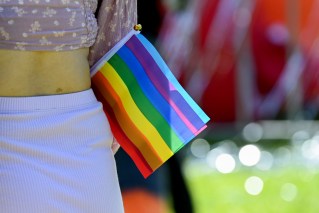Sewage and ‘sea sawdust’ spark icky alarm for busy beaches

Swimmers have been urged to stay away from popular beaches on both sides of the country amid fears of sewage contamination.
As the sun shone and temperatures climbed towards 30 degrees on a glorious summer day in NSW on Friday, Sydney-siders were told to avoid almost every one of the harbour city’s beaches.
Days of heavy rain across NSW has led to fears the water was polluted.
Meanwhile, on the other side of the country, an alarming algal bloom has closed some of Perth’s busiest beaches.
“Some swim sites in Sydney, central coast and Illawara regions may continue to be impacted by stormwater pollution,” Beachwatch NSW warned in a social media post on Friday.
“Before your swim, check for signs of pollution such as flowing drains, open lagoons, odours, litter and debris.”
At least 26 beaches south of Narrabeen on the northern beaches had a red warning of high contamination levels on Friday. They included Bronte, Freshwater, Coogee and Clovelly.
Another 23 beaches – including popular Bronte Beach, Tamarama Beach, North Narrabeen Beach, Brighton-Le-Sands Bath and Lilli Pilli Baths – had amber ratings, warning of possible contamination.
Busy beaches such as Bondi, Clovelly, Maroubra, Dee Why, Shelly, Palm Beach, Camp Cove and Collaroy were deemed safe.
Beachwatch said it might take up to 72 hours for the water to fully clear, and warned swimmers to stay away until at least the weekend.
That is likely to coincide with a warm, fine weekedn – and a south-west change that will finally rid Sydney of the humidity it has endured in recent weeks.
Meanwhile, on the other side of the country, the popular Mullaloo Beach in northern Perth was closed on Wednesday due to the presence of trichodesmium, a blue-green algae that could pose a public health risk.
Authorities say the outbreak was likely triggered by calm water conditions and a heatwave that has affected Perth over the past few days. They have denied it is due to treated wastewater being released into the ocean.
Western Australia’s Department of Biodiversity Conservation and Attractions confirmed a trichodesmium bloom had been seen in the water.
““It is not known to be harmful to humans. However, it can cause minor skin irritations. It is recommended to not swim/walk through the bloom and keep pets away. If you do come in to contact, rinse with freshwater immediately,” a spokesperson said.
Trichodesmium is a yellow-brown surface scum that looks like an oil slick. Sometimes called “sea sawdust”, it can be seen floating on the water’s surface in affected areas.
The beach was closed for two days on Wednesday. It reopened early on Friday.
“Surf Life Saving WA have opened the beach and will continue to monitor the ocean today (Friday),” Mullalloo Surf Lifesaving Club wrote on Facebook.
The club will monitor the situation over the weekend. Club activities will resume as normal.”
The Mullalloo closure came as Perth and much of WA endured a heatwave.
The Bureau of Meteorology issued an official heatwave warning for the most of the state on Thursday. One forecaster predicts temperatures could top 50 degrees in the Pilbara in coming days.







